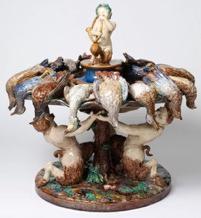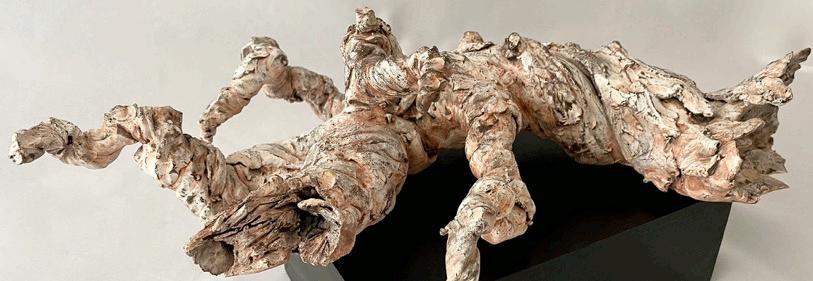
1 minute read
Pamela Pudan RCA
Based in the UK at the moment, she has studied literature, language, and psychoanalysis previously, both here and in Australia, followed by ceramics in Sydney.

Advertisement
For her research project she chose the tazza, or shallow dish. Made by Sevres for the Paris Exhibition of 1855. It represents Pan, god of the hunt and symbol of the ancient woodland, and would probably have been used as a display item in the home of a bourgeosie family to display their wealth and education. She chose it because it stopped her in her tracks when first saw it - both beautiful and repellent but she wanted to understand what it was about. It was made at a tipping point for France, when the Industrial Revolution, and all that it came to mean, was underway and life was taking off in previously unimagined directions. Mass production and consumerism had arrived, and optimism was riding high.


Below: Pamela Pudan. Fallen 2. Earthenware, stoneware, porcelain slip and oxides and the dimensions are 50x45cm. Her response was an interest in looking at the start of the 21st century, also at a tipping point, with life taking strange new directions. The full ramifications of the digital revolution are still unfolding. We are grappling with a world-wide pandemic. And we are on a traceable trajectory from when this piece was made in the mid 19th century - from our vantage point we are able to see the cost of the processes which were just beginning then, especially in terms of our fragile environment.
Right: © Victoria and Albert Museum. Sevres for the Paris Exhibition of 1855.












